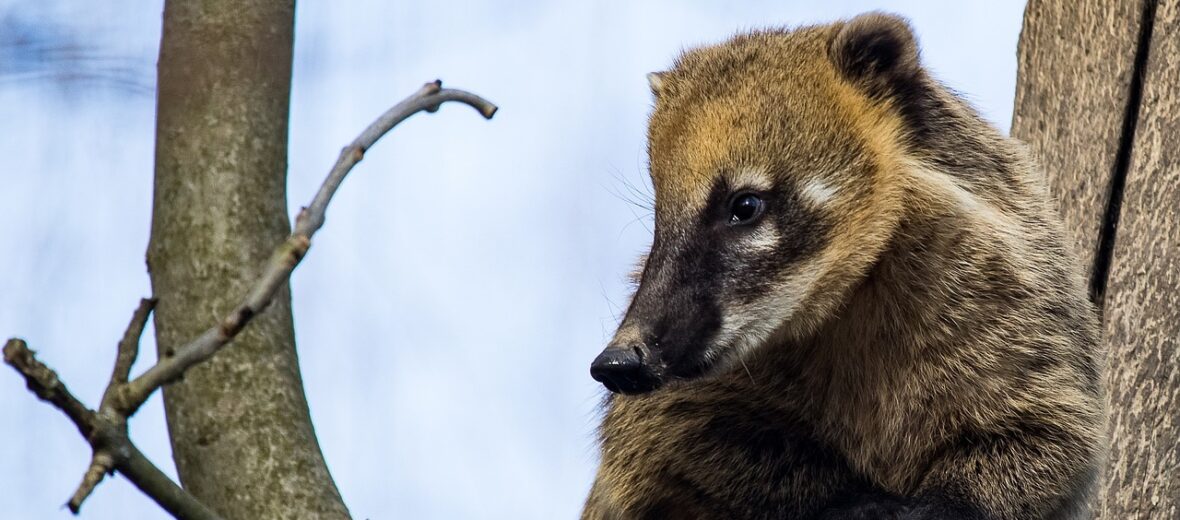
The coatis, aka coatimundis, are relatives of the raccoon that live from Arizona and areas of southern New Mexico in the U.S., through Mexico (except the Baja peninsula and central Sierra Madres) and into Central America, all the way to Panama and into South America in areas west of the Andes, primarily in Colombia. There are 4 known species of coatis that are native to North, Central, and South America.
First the Stats…
Scientific name: Nasua nasua
Weight: Up to 8.7 lbs.
Length: Up to 1.8 feet, plus a 2 foot tail
Lifespan: Up to 15 years
Now on to the Facts!
1.) Unlike raccoons, coatimundis are diurnal (active during the day). They spend most of day looking for food, resting, and grooming.
2.) Female and baby coatis sleep, eat, and travel in packs of about 30 +/-.
3.) A group of coatis are called a band.
4.) When startled, the entire group will jump into nearby trees, all while emitting “clicks” and “woofs.”
5.) Coatis use their long noses to poke under rocks and into crevices for food. They also use their long claws to dig holes or tear apart rotting logs, in search of a meal.
But wait, there’s more on the coati!
6.) They feast on ants, centipedes, larval beetles, scorpions, spiders, lizards, termites, rodents, chickens and carrion (dead animals). These critters also eat fruit and bird eggs.
7.) Males are solitary, while females live in troops of up to 30 individuals.
Did you know…?
They have reversible joints on their ankles that allow them to descend trees, head first, safely.
8.) Coatis are polygynandrous (1 female mates with multiple males).
9.) Females undergo up to a 77 day gestation (pregnancy) that can yield up to 4 kits.
10.) These critters help to control insect populations and are important seed dispersers, from the fruits they eat.
Now a Short Coati Video!
Also, check out the Critter Science YouTube channel. Videos added frequently!
Want to suggest a critter for me to write about? Let me know here.



